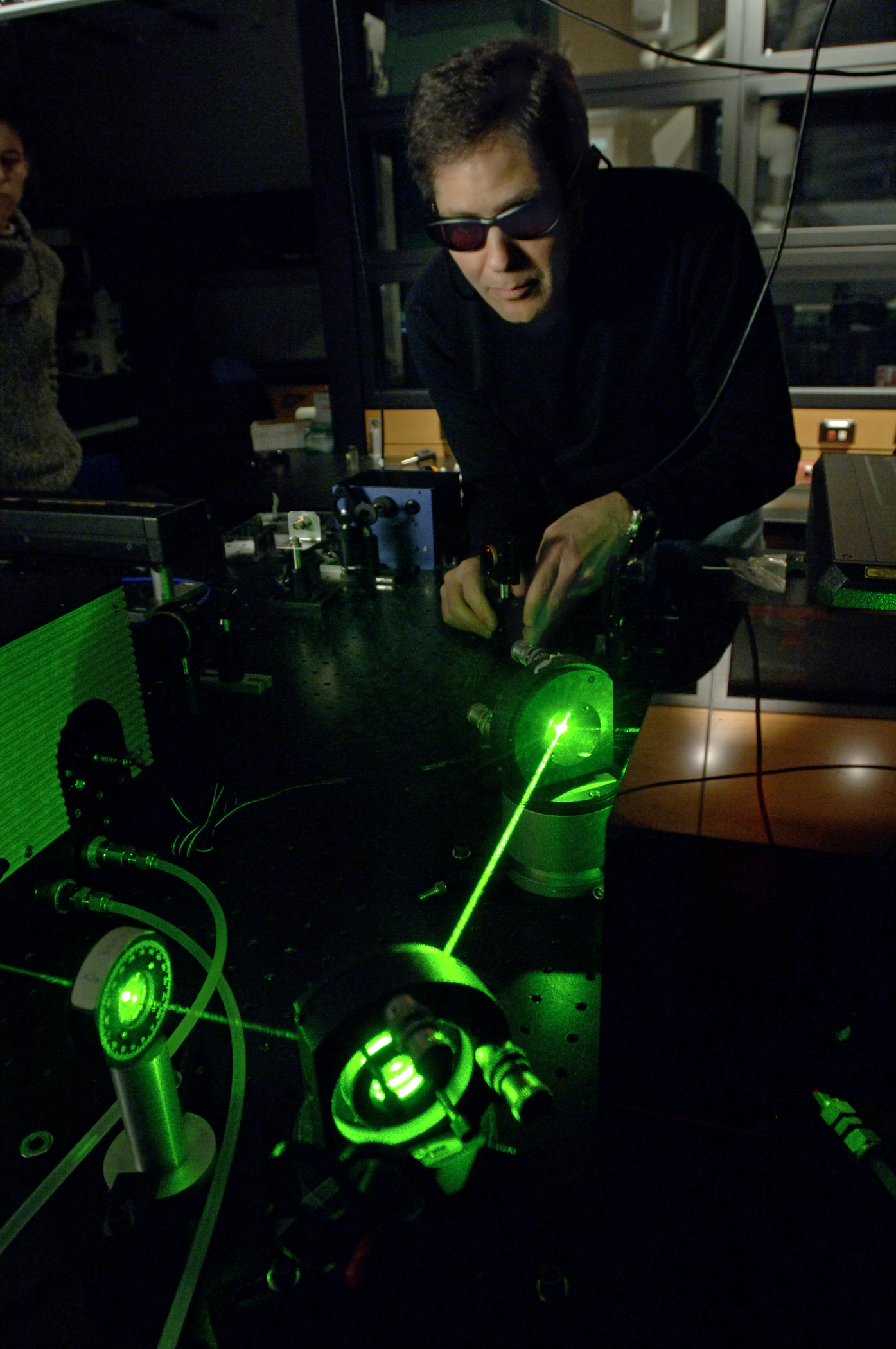A research team at Michigan State University has developed a laser that could detect roadside bombs – the deadliest enemy weapon encountered in Iraq and Afghanistan.
The laser, which has comparable output to a simple presentation pointer, potentially has the sensitivity and selectivity to canvas large areas and detect improvised explosive devices – weapons that account for around 60 percent of coalition soldiers’ deaths. Marcos Dantus, chemistry professor and founder of BioPhotonic Solutions, led the team and has published the results in the current issue of Applied Physics Letters.

The detection of IEDs in the field is extremely important and challenging because the environment introduces a large number of chemical compounds that mask the select few molecules that one is trying to detect, Dantus said.
“Having molecular structure sensitivity is critical for identifying explosives and avoiding unnecessary evacuation of buildings and closing roads due to false alarms,” he said
Since IEDs can be found in populated areas, the methods to detect these weapons must be nondestructive. They also must be able to distinguish explosives from vast arrays of similar compounds that can be found in urban environments. Dantus’ latest laser can make these distinctions even for quantities as small as a fraction of a billionth of a gram.
The laser beam combines short pulses that kick the molecules and make them vibrate, as well as long pulses that are used to “listen” and identify the different “chords.” The chords include different vibrational frequencies that uniquely identify every molecule, much like a fingerprint. The high-sensitivity laser can work in tandem with cameras and allows users to scan questionable areas from a safe distance.
“The laser and the method we’ve developed were originally intended for microscopes, but we were able to adapt and broaden its use to demonstrate its effectiveness for standoff detection of explosives,” said Dantus, who hopes to net additional funding to take this laser from the lab and into the field.
This research is funded in part by the Department of Homeland Security. BioPhotonic Solutions is a high-tech company Dantus launched in 2003 to commercialize technology invented in a spinoff from his research group at MSU.
Paper on smart lasers
Contacts and sources:
Layne Cameron
Michigan State University
The laser, which has comparable output to a simple presentation pointer, potentially has the sensitivity and selectivity to canvas large areas and detect improvised explosive devices – weapons that account for around 60 percent of coalition soldiers’ deaths. Marcos Dantus, chemistry professor and founder of BioPhotonic Solutions, led the team and has published the results in the current issue of Applied Physics Letters.
Marcos Dantus, chemistry department

Credit: MSU
“Having molecular structure sensitivity is critical for identifying explosives and avoiding unnecessary evacuation of buildings and closing roads due to false alarms,” he said
Since IEDs can be found in populated areas, the methods to detect these weapons must be nondestructive. They also must be able to distinguish explosives from vast arrays of similar compounds that can be found in urban environments. Dantus’ latest laser can make these distinctions even for quantities as small as a fraction of a billionth of a gram.
The laser beam combines short pulses that kick the molecules and make them vibrate, as well as long pulses that are used to “listen” and identify the different “chords.” The chords include different vibrational frequencies that uniquely identify every molecule, much like a fingerprint. The high-sensitivity laser can work in tandem with cameras and allows users to scan questionable areas from a safe distance.
“The laser and the method we’ve developed were originally intended for microscopes, but we were able to adapt and broaden its use to demonstrate its effectiveness for standoff detection of explosives,” said Dantus, who hopes to net additional funding to take this laser from the lab and into the field.
This research is funded in part by the Department of Homeland Security. BioPhotonic Solutions is a high-tech company Dantus launched in 2003 to commercialize technology invented in a spinoff from his research group at MSU.
Paper on smart lasers
Contacts and sources:
Layne Cameron
Michigan State University
Comments
Post a Comment